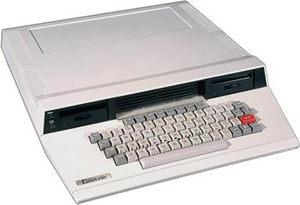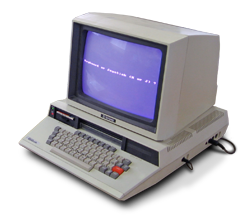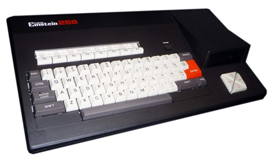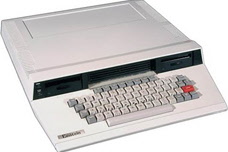- How to use the Site
- Acorn / BBC
- Amstrad
- Atari 8-Bit
- Atari ST
- Commodore 8-Bit
- Commodore Amiga
- Dragon
- Sinclair
- Tandy RadioShack TRS-80
- Tatung Einstein
- Texas Instruments TI-99/4
- Media - Disks, Cartridges, Wafas, Cassettes etc
- Programming, Games Construction & Utilities
- Miscellaneous Retro Computer Sales
Tatung Einstein

Select from the Einstein sub-categories of the side menu bar or the links above to access the different Einstein sections, or read a little about the history of the company and their machines below...
A Quick History...
Early development of the Tatung Einstein took place at Tatung UK's technical laboratory in Bradford before production began at its factory in Telford.
They produced a large, very well built, reasonably priced (for the specification) machine using the very popular Z80A processor running at an impressive 4MHz, supported by an equally impressive 80K of RAM, of which a generous 16K was devoted solely to the display.
Outputs to TV and RGB were provided, along with standard serial and centronics printer ports, two joystick connectors and the "Tatung Pipe" which directly accessed the 8-Bit data bus.
The system also included a built-in 3" disk drive, with space for a second optional drive - a very impressive package built in a large case with a sunken top case for the monitor to stand in.
Tatung Einstein TC01
The Tatung Einstein TC-01 was released in the summer of 1984.
It was unusual in that it entered a machine code monitor called "MOS" (Machine Operating System) on start up. A clever idea as a variety of software could then be run from disk including Xtal DOS (a CP/M compatible OS), XtalBASIC or even the excellent BBC BASIC which was available for the machine.
Tatung Einstein 256
The Einstein 256 (TCS-256) followed which was very similar to the original, but with more memory, improved video and a slimmer black case.
Whilst the Einstein may have been technically impressive (and loved by programmers), its price (£499 for the TC01) and specification fell in the uncomfortable mid ground between home and business computers.
Although Tatung themselves wrote software for the machine and produced a dedicated user magazine, unfortunately, few third party software houses were interested in developing for it as its price was too much for the home computer market. Ironically, it was so popular with programmers that it was used by many software houses for programming, then porting the code to other more popular games computers such as the Spectrum, Amstrad and Commodore 64!
Equally unfortunate was that despite the standard ports, disk drives, RGB output and great keyboard, it lacked the power (and software support) for the growing business and education markets.
The excellent machine was stuck between a rock and a hard place.
The Einstein had a short life and was dropped by Tatung after they acquired the rights to produce IBM PC clones...


